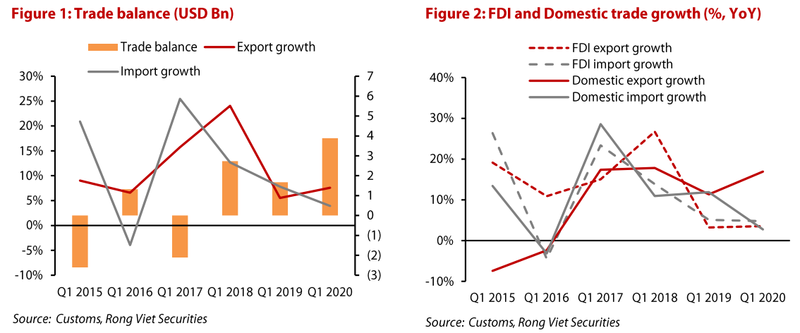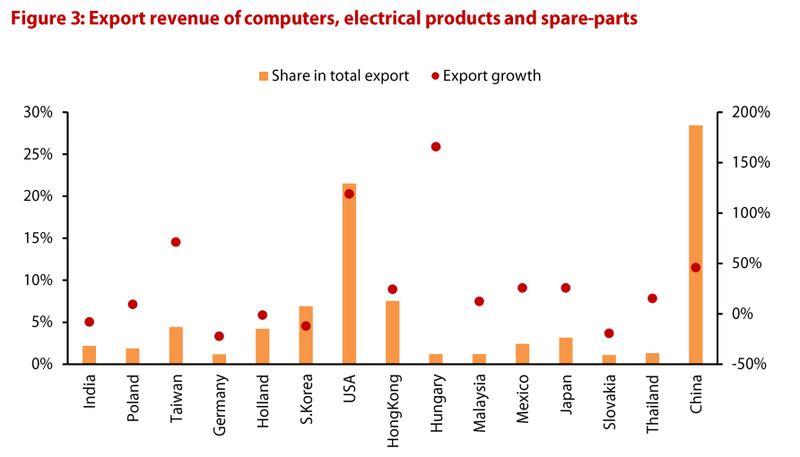Vietnam’s record Q1 trade surplus hints at replacing China in global supply chain
The continuous increase in the trade balance implies Vietnam’s rising manufacturing capacity and its attractiveness to foreign investors in key sectors.
Vietnam’s all-time high trade surplus of US$3.74 billion in Q1, with the manufacturing and processing being a key contributor, showed the country’s promising capability in gradually replacing China’s role in the global supply chain of electronic and electrical products, according to Viet Dragon Securities Company (VDSC).
At a time when China’s national lockdown threatened the supply of intermediate products and hit Vietnam’s exports of agriculture goods, both foreign and domestic manufacturers in Vietnam have responded quickly and diversified their input resources, putting them in a position to supply Chinese manufacturers at the beginning of their production resumption, said VDSC in its latest report.
The preliminary trade data from the General Department of Vietnam Customs (GDVC) indicated a different picture than the one painted by the General Statistics Office (GSO) in the three-month period, as the actual trade surplus beat the GSO’s estimation of US$2.8 billion and the record level of US$2.69 billion in Q1 in 2018.
According to GDVC’s data, Vietnam’s export revenue grew at an annual pace of 7.6% in Q1, well above the 5.5% growth rate recorded in the same period last year. The US and China remained the country’s biggest markets, recording respective growth rates at 19.5% and 22.4% year-on-year during the period.
| Source: VDSC. |
Notably, export to China skyrocketed to nearly US$3.9 billion in March, up over 30% year-on-year. Electrical and electronic products contributed the most and beat the estimates of the GSO, while agriculture goods were still stuck at the borders due to tightening border control measures.
Bac Ninh province and Ho Chi Minh city were the brightest manufacturing spots. In Ho Chi Minh city, industrial production increased by nearly 12% year-on-year while the general manufacturing output dropped by 1.7%. Export revenues of computers, electrical products advanced by 35% year-on-year. Similarly, the output soared by 40% year-on-year in Bac Ninh province. Especially, the export turnover of this subsector doubled year-on-year in Q1.
While foreign manufacturers keep playing an important role, their domestic peers are rising quickly. Foreign-invested firms collected nearly US$7.9 billion in revenue of exported computers and electrical products in Q1, up 23% year-on-year. Nevertheless, domestic companies sold over US$1.2 billion of these products in the first quarter, increasing at an inter-annual pace of over 100%, from nothing in 2015.
More importantly, the continuous increase in the trade balance not only implies Vietnam’s rising manufacturing capacity and its attractiveness to foreign investors in key sectors, but also strengthens the macro-economic stability via high foreign exchange reserves, in turn relieving pressure on the Vietnamese Dong (VND), concluded VDSC.













